The variety of goldfish breeds is amazing. Sometimes it seems that Asian breeders for more than a thousand years of history have managed to modify almost any part of the fish in fish. It is worth noting that, unlike European culture, where it is customary to look at fish from the side, in Asian countries, they usually look at fish from above, therefore, great importance is attached to the shape of the body and, especially, the tail.
General information
The Butterfly breed of goldfish is a type of telescope and features a forked tail fin, which when viewed from above resembles the spread wings of a butterfly.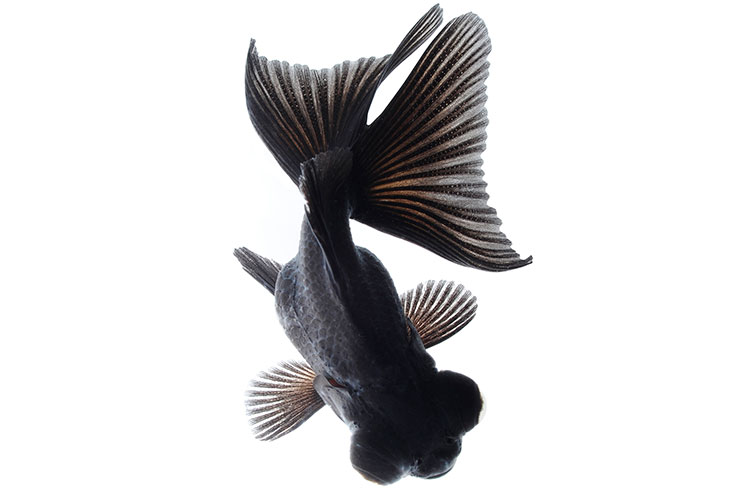
Fish of this breed appeared on sale not so long ago – in the 1980s. They were bred in China, but nowadays the main supplies are made from Japan – the world center for breeding goldfish. In addition to the modified tail, the rest of the fish is no different from the well-known telescope both in terms of keeping conditions and feeding. It is important that there are no decorations in the aquarium that can damage the bulging eyes and highly developed fins, as well as competently approach the choice of neighbors because butterflies are very slow fish.
Appearance
Butterfly telescopes have a short, egg-shaped body. The abdomen is convex. The tail has the shape of a butterfly, spreading its wings, for which the fish got its name. The eyes are large, differing in size, shape, and direction of the axes.
The size of the fish usually does not exceed 15 cm, but in large aquariums or decorative ponds, they can grow up to 25 cm.
Several varieties of butterfly telescopes are distinguished by color, some colors have their own unique names:
- The chintz butterfly is characterized by the presence of randomly spaced spots of three colors – white, gold, and black.
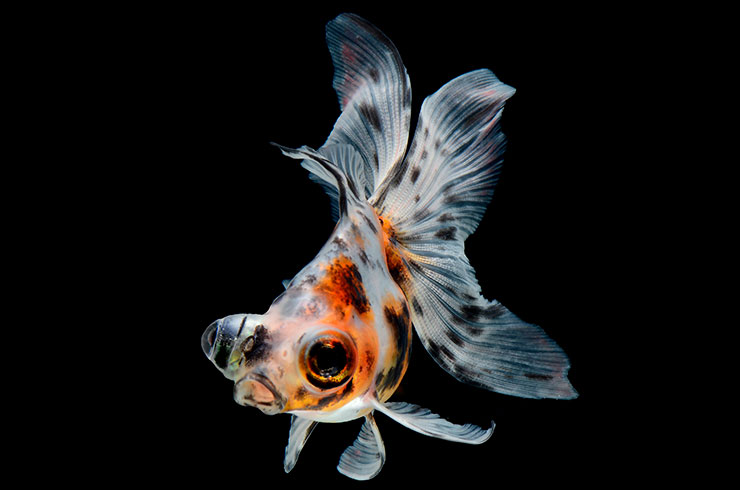
- The black and white butterfly is called “Panda” for its resemblance to the Chinese bamboo bear.
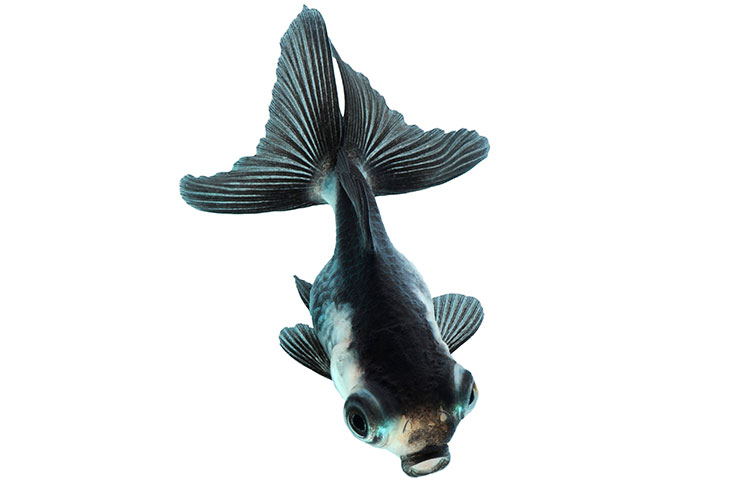
- The red butterfly has a solid orange body and is called “Orange”.
- The red and white butterfly has an original color: the body is covered with red and white spots, and there are small black dots on the tail.
- The red-black butterfly differs in that the ends of all the fins of this species are black.
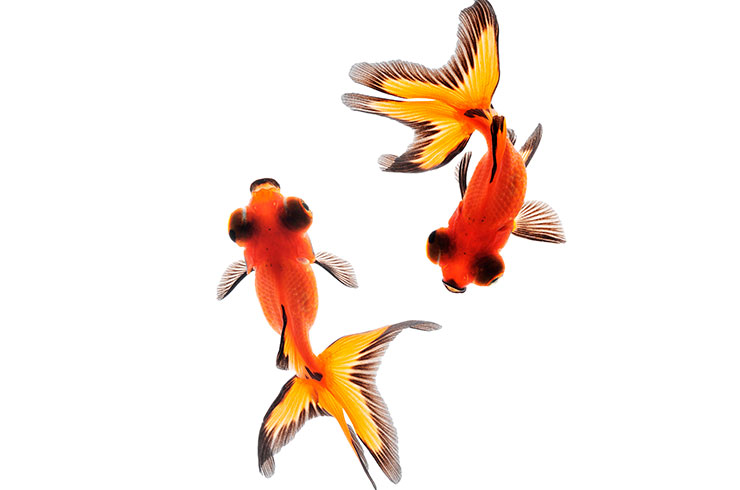
- Black butterfly – completely black. One of the most popular breeds.
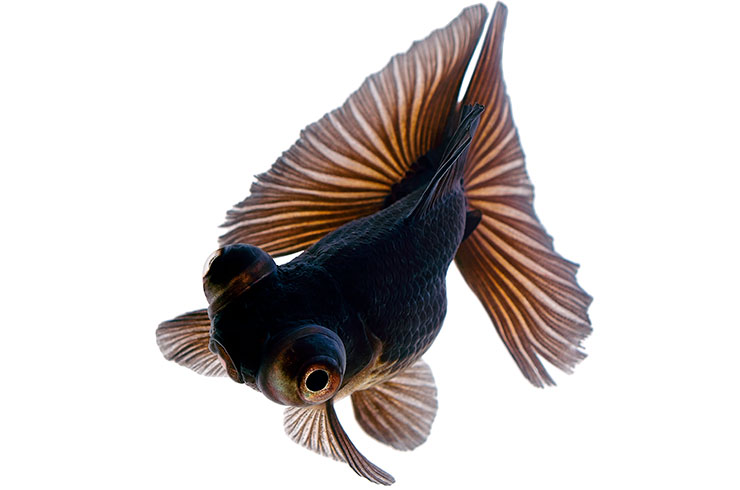
- Butterfly pompom – differs in the presence of greatly enlarged nasal valves, forming growths that resemble pompons.
Recently, numerous veiled forms of butterflies have appeared, but having lost the “classic” shape of the caudal fin, they become less attractive.
Habitat
Butterfly goldfish, like any other goldfish species, do not occur in nature. Moreover, most of them in natural conditions, due to structural features, will not be able to survive. Such fish can exist only in an aquarium, where a person creates the most comfortable conditions for them.
Care and maintenance
To keep goldfish butterflies, you need a fairly spacious aquarium. It is desirable that at least 40 liters of a waterfall on one individual.
It is best to use large rounded pebbles as soil, since butterfly goldfish are fans of digging up soil in search of food, and small pebbles can be accidentally swallowed.
It is very important to be careful with the choice of scenery. The most vulnerable spots in butterflies are the eyes and long fins, so the decor should not have sharp edges that the fish can get hurt on.
If you want to use live plants in your design, you must opt for hard-leaved species (Anubias, Cryptocorynes, Echinodorus). They need to be planted so that the fish cannot get to the roots and dig up the plants.
An effective filtration system must be set up in the aquarium, as butterfly goldfish pollute the water very quickly. It is important that the flow of water is not very powerful because goldfish butterflies are unimportant swimmers. It is also necessary to install a suitable compressor for good aeration of the aquarium. But the thermostat is not an obligatory device, because butterfly telescopes feel great at temperatures up to 23 ° C.
Changes of 30% of the aquarium water should be done weekly to avoid the build-up of hazardous waste products.
Compatibility
Butterfly goldfish are short-bodied breeds, so it is best to keep them with similar shapes (veil-tails, oranda, water eyes). This is due to the fact that butterflies do not have good eyesight and will not be able to compete for food with faster relatives.
Due to the difference in comfort temperatures, most tropical fish are incompatible with goldfish butterflies. It is undesirable to plant them with barbs, cichlids, irises, as well as harassing (thorns, neons, etc.) – all these fish will not mind biting the long fins of telescopes or damaging their eyes.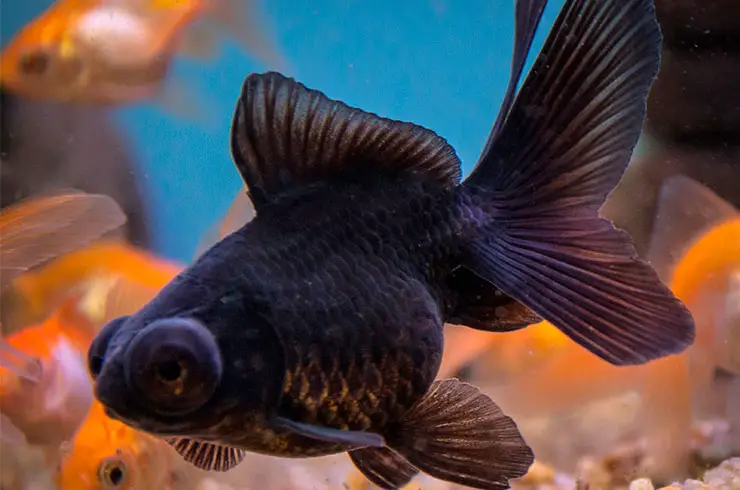
Butterfly feeding goldfish
In aquariums, goldfish butterflies are excellent at eating any kind of food of a suitable size. It is best to choose quality dry food for goldfish as your main food. For example, Tetra Goldfish Gold Japan has been specially formulated for breeder goldfish. The food in the form of mini sticks gradually sinks to the bottom. This is where telescopes usually prefer to look for food. It is rich in plant components that are important for the digestion of goldfish.
The basic food for all Tetra Goldfish is also well suited. It comes in several forms (flakes, chips, granules, sticks), among which it is easy to choose the one that pets like the most.
And for “dessert” you can offer the fish Tetra FreshDelica Daphnia – Daphnia in nutritious jelly. Your telescopes will surely love it.
The use of high-quality ingredients in the production of Tetra feed ensures maximum digestibility and a reduction in fish waste, which allows the water to remain clean for a long time.
Telescopes need to be fed several times a day, with a portion of food that will be completely eaten in 2-3 minutes. It is recommended to arrange a fasting day once a week.
Reproduction and breeding
To breed goldfish butterflies, you will need a spawning aquarium with a volume of at least 50 liters. The water level should be about 30 cm. Small-leaved plants or a net are laid at the bottom, because the fish are not at all inherent in caring for the offspring, and they can eat their eggs.
The preparation of producers begins about a month before spawning, the strongest fish are selected, without external defects. For reproduction, you will need one female and a pair of males. Males can be distinguished by the small white tubercles that form on the gill covers.
The temperature in the spawning box must be maintained at 22-24 ° C.
The female can lay up to 3000 eggs, after which the broodstock must be deposited. The incubation of eggs lasts 5 days, and the fry begins to swim on their own a week after hatching.

